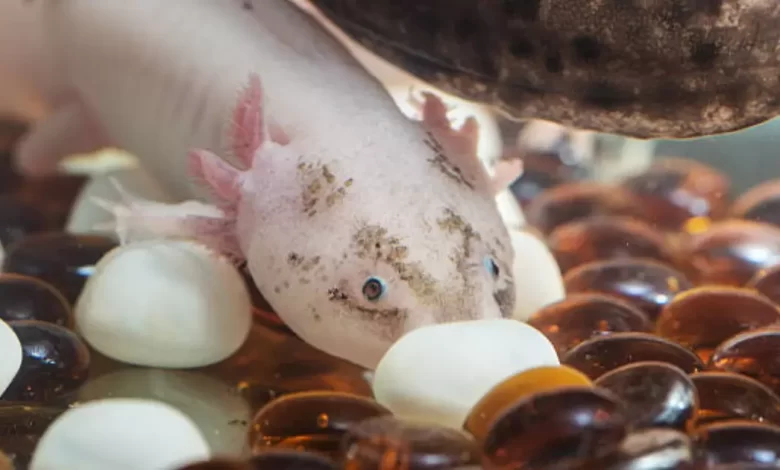The Lifecycle of an Axolotl With Pictures

Axolotls, known for their captivating appearance and unique lifecycle, intrigue enthusiasts with their remarkable transformations from larvae to mature adults. Scientifically named Ambystoma mexicanum, these amphibians hail from Mexico. This blog post delves into their fascinating journey through various life stages.
Birth of Axolotls
The lifecycle of axolotl begins with the formation of eggs, which are laid in substantial numbers and enveloped in a protective layer within the mother’s womb. The embryo, housed in jelly-like substance, initially measures approximately 2mm in diameter. As it nears hatching, its size expands to about 11mm.
Hatching and Larvae Stage
Upon hatching, the embryo emerges as a larvae, its skin distinct but devoid of limb growth. Over the next two weeks, the larvae witness significant limb development, starting with the front legs followed by the hind legs. As fins and feathery parts begin to form, the young Axolotl becomes a delightful sight.
Adulthood and Transformation
Upon reaching adulthood, Axolotls attain full development but remain juveniles. They may choose between undergoing metamorphosis to terrestrial life or retaining their aquatic nature. Most Axolotls opt to remain aquatic, showcasing their distinctive juvenile characteristics.
Regeneration Abilities
Axolotls possess a remarkable ability to regenerate lost limbs, heal spinal cords, and repair broken body parts—a unique trait that holds promise for advancing human regeneration techniques.
Reproduction and Guardian of Eggs
During courtship seasons, Axolotls engage in intricate dances and movements to attract mates. Upon agreement, the male fertilizes the eggs externally, which the female carefully lays on aquatic plants or safe surfaces. Unlike many aquatic species, Axolotls actively guard their eggs against predators, ensuring their safety until hatching.
Factors Influencing Metamorphosis
While some Axolotls undergo metamorphosis to adapt to land, others remain aquatic due to genetic factors or survival advantages. Their ability to regenerate and breathe through gills makes aquatic environments optimal for their survival.
Sexual Maturity
Male Axolotls typically reach sexual maturity earlier than females, identifiable by their elongated bodies and tails. White or albino Axolotls exhibit additional changes, such as darkened toe tips upon reaching adulthood.
Conclusion
In conclusion, Axolotls are extraordinary amphibians renowned for their beauty and resilience. Their lifecycle—from egg to mature adult—reflects their unique adaptations and regenerative capabilities, captivating observers and researchers alike. Learn More About Aquatic Animals and Fish
Frequently Asked Questions
How many stages of life do Axolotls have?
Axolotls undergo three main stages in their lifecycle:
- Egg stage
- Larvae stage
- Mature Axolotl
Can Axolotls live outside of water?
Axolotls are primarily aquatic animals. While some may undergo metamorphosis to live on land, most thrive in aquatic environments.
How long do Axolotls live?
With proper care and a balanced diet, Axolotls can live up to 10-15 years in captivity, depending on their environment.
Are Axolotls endangered?
Axolotls face endangerment due to habitat destruction and water pollution, necessitating conservation efforts.
How long do Axolotls take to grow?
Axolotls have a slow growth rate, taking 12-18 months to reach full adult size when provided with optimal water conditions and nutrition.





